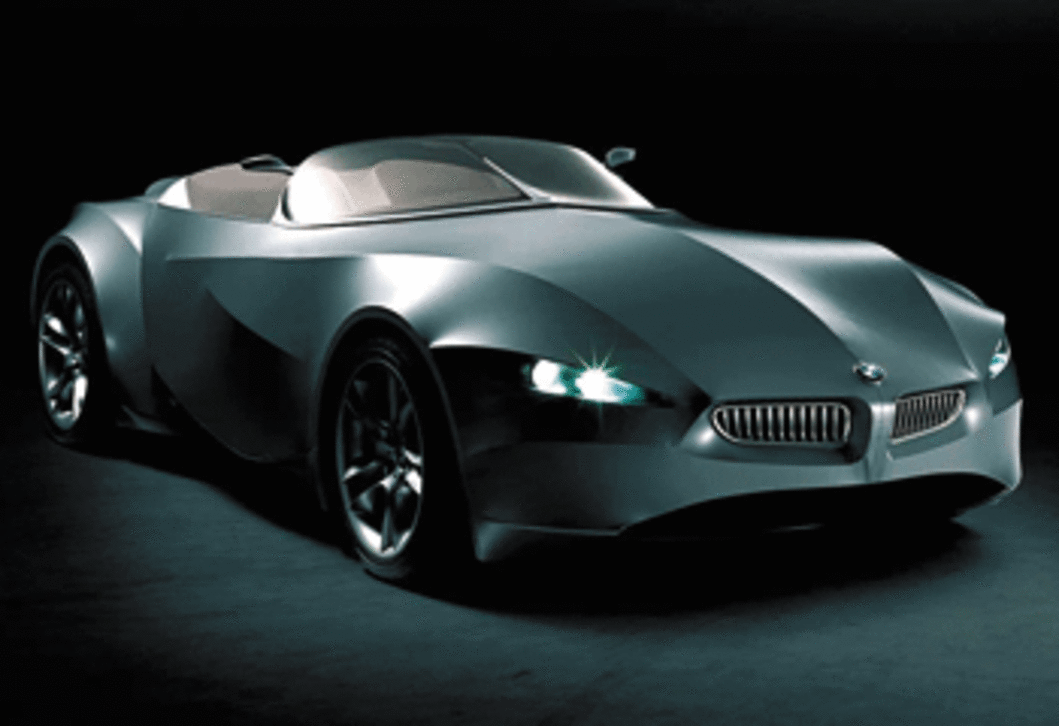GINA, THE SHIFTING SHAPE OF THINGS TO COME
The future of styling is now public at BMW.
The company has just revealed the Gina Light Visionary vehicle it created in 2001 to drive design forward.
It looks like a tweaked Z4 roadster, but has a fabric body that can be stretched in various directions to give a different take on the same basic shape.
Gina will be reflected in all sorts of forthcoming models, including the baby X1 four-wheel drive expected to break cover at the Paris Motor Show in September.
The concept car is about to enter a museum but the company's design boss, Chris Bangle, says it has played an important role.
“It's a reaction to the norms of car manufacture, in which everything is fixed,” he says.
“We're convinced the principles it sheds light on have an important future. It helped make the point about emotional design.”
THINK TANK
Researchers are trying to predict the future at a top-secret think-tank in Munich, Germany.
The team with the toughest task in the car world was set up by BMW, which is desperate to unlock the secrets of a successful motor company in the time beyond petrol.
More than 100 of its best and brightest brains have been transferred to the task, called Operation I.
No one from the German luxury brand will talk about the details beyond the basics. It is newly set up and reports directly to the BMW board.
“They are looking at everything,” BMW global head of sales Ian Robertson says.
“They are looking at different ways to produce cars, different ways to build cars. The whole future of the car.”
BMW chose one of its brightest stars, Uli Kranz, to head the think-tank. He is the man who brought the Mini back from the dead and turned it into a global success and a big money-maker for BMW Group, as well as showing it was still possible to turn a profit on cars made in Britain.
His team includes planners, designers and engineers at a new research base outside BMW's regular technical centre, the FIZ in Munich, which has more than 4000 engineers and has been operating since the 1990s.
“They are outside the group. They are not held back by anything. They are totally different,” Robertson says. “What that tells you is that the BMW Group is already on a road to maintain its technical leadership and its approach to cars of the future.”
Robertson, also the chairman of Rolls-Royce and leading the launch of its latest $1 million-and-more Phantom Coupe, refuses to be drawn on the amount BMW is spending on the project.
“It's a big budget. That's all I will say,” he says.
But he reports it is already generating its first ideas, though no one has any news on when, or if, any of the stuff will go into production. Robertson says they are already doing sketches and plans and the first models.
This approach to the future of motoring is not new — General Motors set up a similar think-tank in the 1980s.
It was the brainchild of the disgraced former head of the company, Roger B. Smith, at a time when GM was also looking to combat the invasion of affordable Japanese cars in the US.
Its response was the creation of the Saturn division, which has still not delivered much more than minimal returns on a plan to draw younger buyers into GM's new-car net. Smith promised his think-tank was even looking at the most basic decisions on personal transport, and said it could recommend a future car
could be a hovering “egg” instead of a conventional-wheeled vehicle.
But Smith, who famously told Australian journalists “What have the Japanese ever invented, except for the coin-holder?” never presented any concrete ideas, despite spending many millions.



.jpg)



.jpg)


.jpg)












.jpg)
.jpg)

.jpg)




.jpg)
.jpg)
.jpg)
.jpg)




.jpg)
Comments